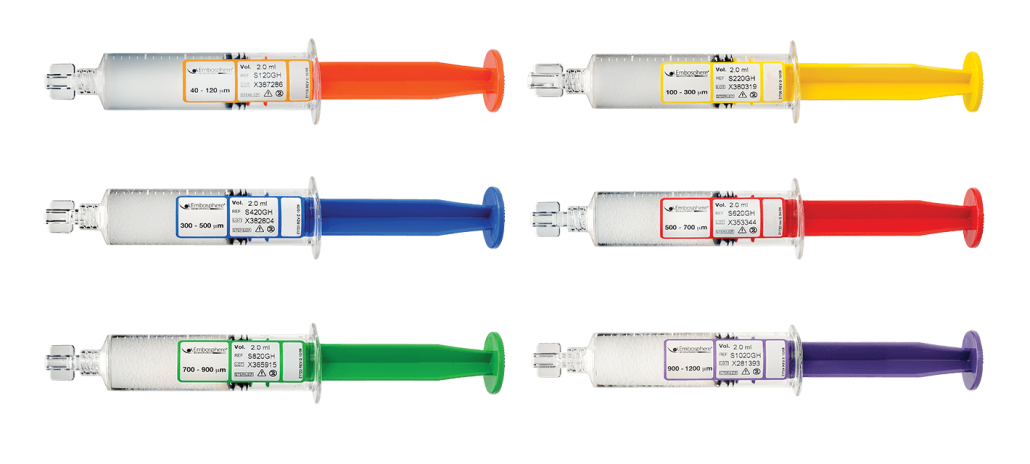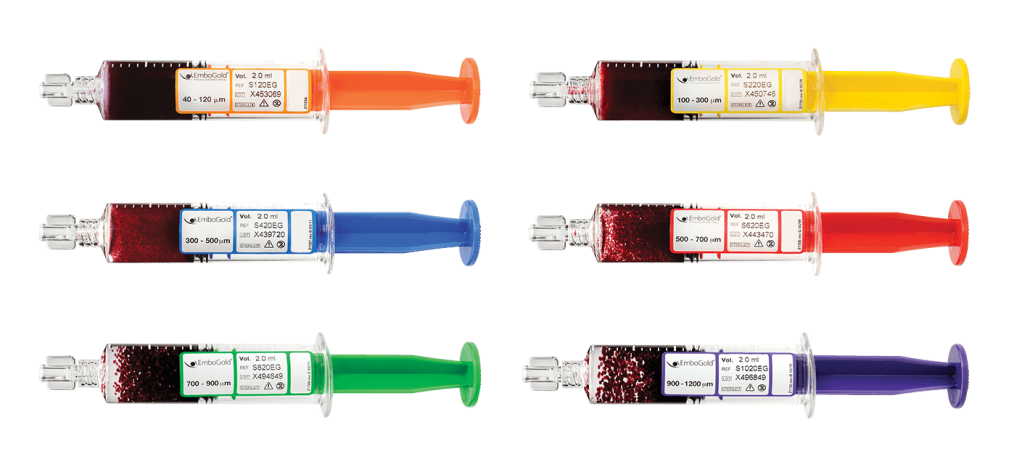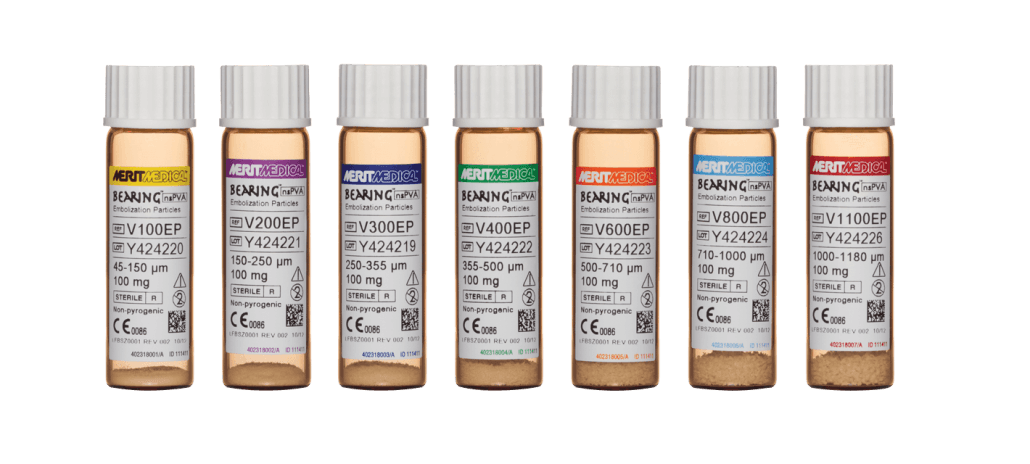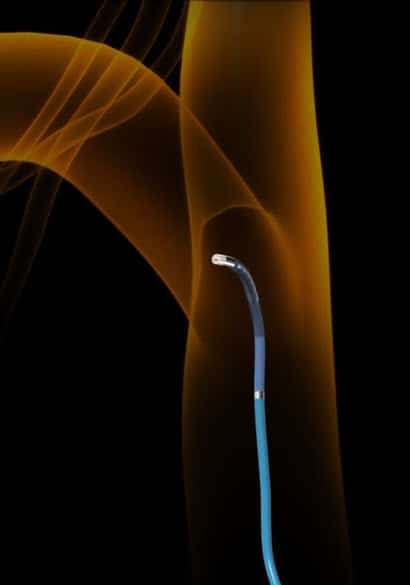
Selective catheterization can be associated with several challenges, such as acute angle branching, blood vessel tortuosity, and small targeted vessel diameter.1 The SwiftNINJA Steerable Microcatheter by Merit Medical, a straight tip catheter that articulates up to 180 degrees in opposing directions, is designed to rapidly select challenging vascular ostium.
A case report by Soyama et al.1 found multiple benefits to using the SwiftNINJA in catheterizations involving acute angle branches as well as a new technique of intentional folding of embolization coils for compact coil packing. The authors found that using a steerable microcatheter made the procedure easier compared to using a conventional device.
The study, published in CardioVascular and Interventional Radiology,1 discussed the following two cases:
CASE 1: CATHETERIZATION OF ACUTE ANGLE BRANCHES
A male patient in his 60s presented with an angiomyolipoma of the left kidney. CT images showed an 8-cm tumor of the left kidney, which had enlarged. To prevent tumor rupture, transcatheter arterial embolization was conducted.
Using the Seldinger technique, a 5F J-shaped sheath introducer was placed percutaneously into the aorta via the left femoral artery. Selective left renal arteriography was performed with a 4F cobra-shaped catheter.
The arteriogram showed two arterial branches of the superior renal capsular artery supplying the primary blood flow to the tumor, both branching out from the main left renal artery with an acute angle of origin. Due to the acute angle branching, Soyama and his team were unable to selectively insert a manually tip-shaped guide wire and instead used the SwiftNINJA as follows:
Bent the tip to turn the orifice of the targeted branch by dial manipulation at the proximal handgrip. Fixed the shape of the tip with the dial stopper.
STEP 2:
Inserted a 0.016-in guide wire into the targeted branch.
STEP 3:
Unlocked the dial stopper. Pushed the microcatheter deep into the targeted branch using the over-the-wire method.
RESULTS:
Catheterization of two targeted branches was completed within 3 minutes. Successful embolization of the target branches followed.
CASE 2: INTENTIONAL FOLDING OF METALLIC COILS IN THE BLOOD VESSEL
A male patient in his 60s presented with right maxillary cancer and was admitted for transcatheter arterial infusion chemotherapy combined with irradiation.
A 5F sheath introducer was percutaneously placed into the aorta via the right femoral artery followed by selective insertion of a 5F catheter into the right common carotid artery. The SwiftNINJA was then inserted into the right internal and external carotid artery.
Selective angiogram showed the targeted tumor was being supplied by the right internal maxillary artery, the transverse facial artery, and the facial artery. It was embolized with pushable metal coils with the intention of creating compact packing of the coils to strengthen the embolic effect and prevent reperfusion:
STEP 1:
Bent the tip of the SwiftNINJA inside the blood vessel using the proximal dial, maintained tip shape, and slowly pushed the coil. The coil was intentionally folded by the change in tip direction. Compact packing was achieved.
STEP 2:
Pushed the second coil into the targeted blood vessel in the same way, completing the embolization using compact coil packing of the right superficial temporal artery.
In procedures such as these, selective catheterization can be very difficult, in some cases forcing a physician to abandon the catheterization all together—even if the shape of the guide wire and catheter was chosen to fit a desired vessel branch.1
In contrast, the SwiftNINJA “has the potential to make selective catheterization easier than when using the conventional device, due to the ability to control the tip shape,” the authors write.1
In the first case,1 the SwiftNINJA allowed the user to shape the tip to the targeted branches easily and properly when needed. It could also be manipulated during catheterization without removing it to reshape the tip, which the authors said could potentially make selective catheterization easier.
The authors1 suggested that in the second case, the SwiftNINJA could be useful for both selective catheterization and compact packing of metallic coils where adjusting and maintaining microcatheter tip shape can be a challenge. Using a steerable microcatheter, they write, “enables the user to easily create an initial loop of the inserted coil and intentionally fold the coils with the stiffly bent catheter tip.”
Soyama et al.1 concluded that the SwiftNINJA “has the potential . . . to allow difficult catheterizations to be completed more easily.”1
SWIFTNINJA KEY FEATURES
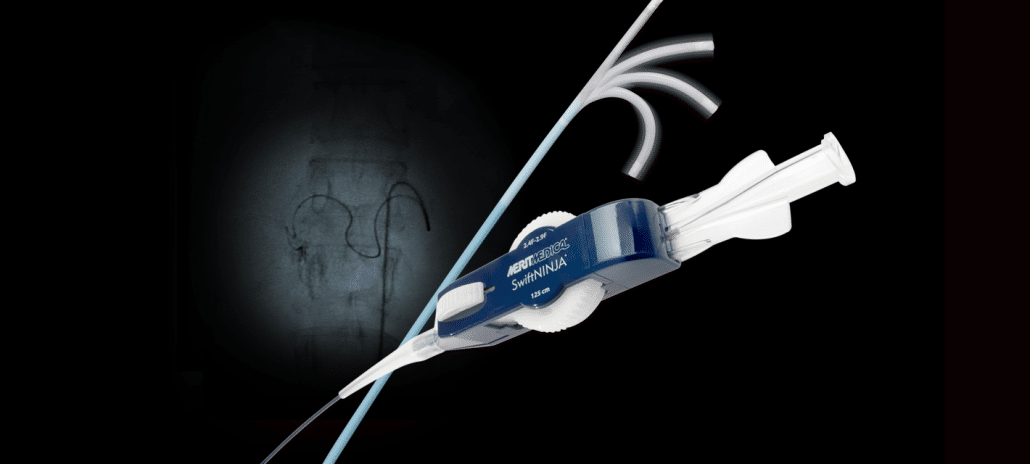
Several features and benefits enable the SwiftNINJA to be the solution needed during challenging interventional procedures:180-Degree Steerable Tip The SwiftNINJA’s steerable tip provides speed, navigation, and support—even in the most challenging vascular anatomy. An ergonomic steering dial enables the catheter tip to be deflected from straight to opposing directions up to 180 degrees, allowing for in vivo steering control.
Steering Lock Once the SwiftNINJA’s tip is positioned at a desired location, it can be locked to hold the shape of that position. The tip will remain positioned for embolic placement without the worry of recoil, loss of position, or embolic displacement.
Multi-Dimensional Steering Once the catheter is shaped into a desired position, the SwiftNINJA can then be torqued and advanced through the vasculature, providing 3D steering as it moves in two planes simultaneously.
Tungsten-Braided Shaft Built with a tungsten-braided shaft, the SwiftNINJA provides support and pushability when navigating tortuous vasculature.
Cost Efficiency Because the SwiftNINJA can navigate through complex blood vessels and reach target anatomy quickly, it can be a cost-effective option compared to failed attempts using numerous catheters. As mentioned by Soyama et al.,1 the SwiftNINJA made their procedure easier to perform than using a conventional device.
Similarly, another case study by Hinrichs et al.2 described successful coil embolization of a small hepatointestinal collateral with the SwiftNINJA after failed attempts with other catheters. Henrichs et al.2 write, “taking into account the numerous regular microcatheters that were used without success in our two cases, the appropriate use of a steerable microcatheter can be even more cost-effective with regard to the total material costs.” Merit Medical is committed to providing the medical devices needed to improve and transform healthcare. Discover the SwiftNINJA Steerable Microcatheter by visiting the product page and the Merit Medical Customer Support Center for more information.
RELATED PRODUCTS
References
- Soyama et al. 2017. “The Steerable Microcatheter: A New Device for Selective Catheterization,” CardioVascular and Interventional Radiology 40, no. 6: 947-952, PMID: 28138724.
- Hinrichs et al. 2017. “Coil Embolization of Reversed-Curve Hepatointestinal Collaterals in Radioembolization: Potential Solutions for a Challenging Task,” Radiology Case Reports 12, no. 3: 529-533, PMID: 28828119.
